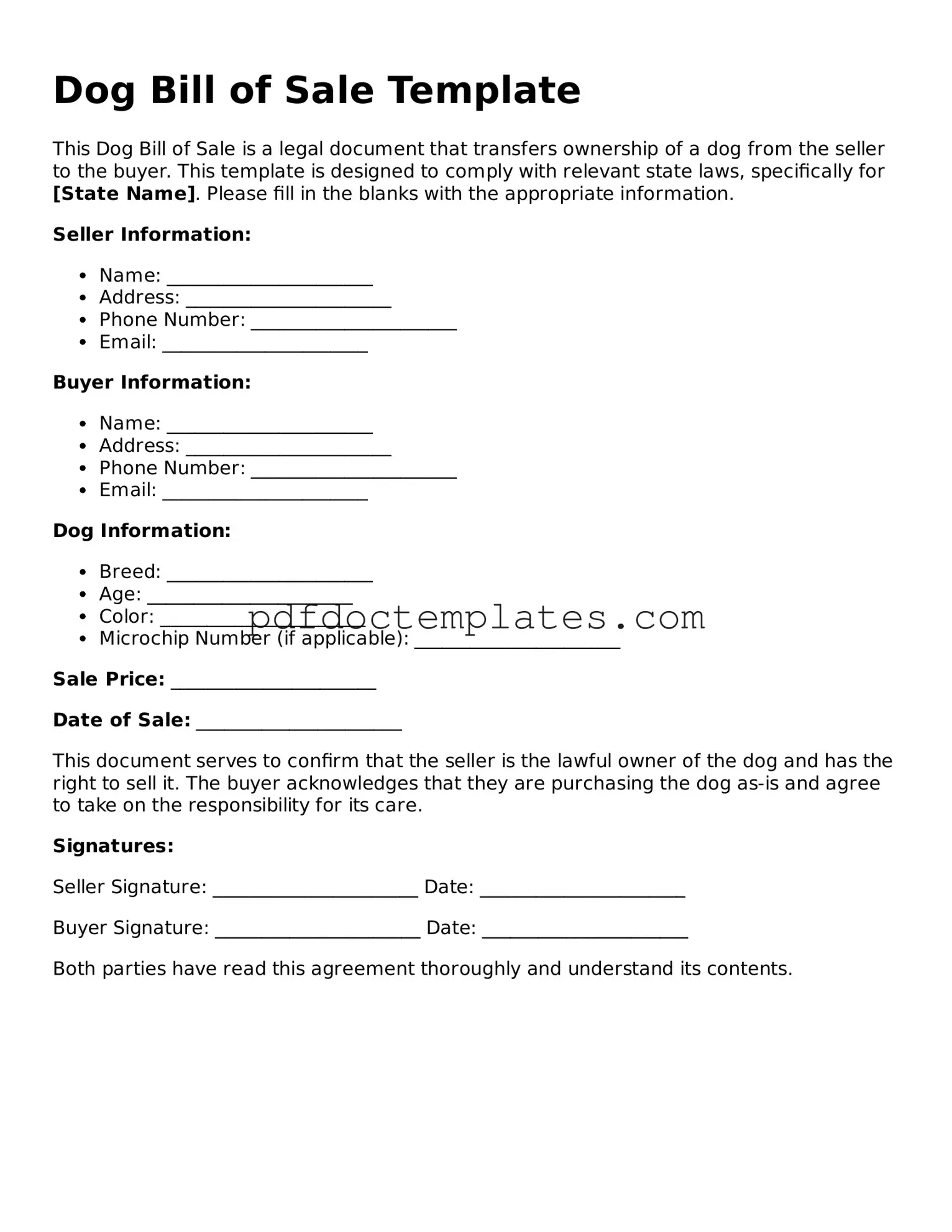Dog Bill of Sale Template
This Dog Bill of Sale is a legal document that transfers ownership of a dog from the seller to the buyer. This template is designed to comply with relevant state laws, specifically for [State Name]. Please fill in the blanks with the appropriate information.
Seller Information:
- Name: ______________________
- Address: ______________________
- Phone Number: ______________________
- Email: ______________________
Buyer Information:
- Name: ______________________
- Address: ______________________
- Phone Number: ______________________
- Email: ______________________
Dog Information:
- Breed: ______________________
- Age: ______________________
- Color: ______________________
- Microchip Number (if applicable): ______________________
Sale Price: ______________________
Date of Sale: ______________________
This document serves to confirm that the seller is the lawful owner of the dog and has the right to sell it. The buyer acknowledges that they are purchasing the dog as-is and agree to take on the responsibility for its care.
Signatures:
Seller Signature: ______________________ Date: ______________________
Buyer Signature: ______________________ Date: ______________________
Both parties have read this agreement thoroughly and understand its contents.
